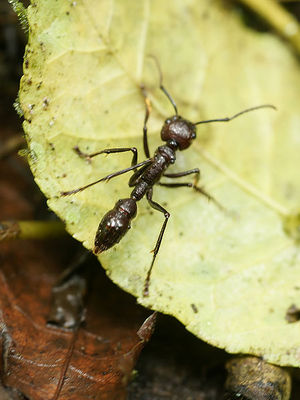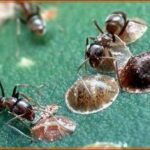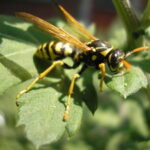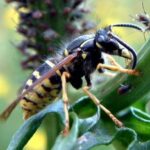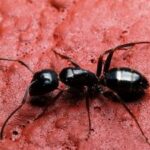Paraponera, or bullet ants, can be found in Nicaragua and Paraguay. They are known as bullet ants because victims of their stings claim that the sensation of being stung by one of these ants is similar to being shot. In fact, it is said that a bullet ant’s sting is 30 times more painful than being stung by a wasp. These ants are about one inch long (rather large for an ant) and are black or reddish-black in color.
The sting of a bullet ant has many other possible side effects, apart from the pain. Their stings can cause nausea, fainting, dizziness, significant shaking and paralysis of the afflicted area. Being inflicted with many stings from bullet ants can result in death. Researchers estimate that it would take 30 stings per 66.2 pounds to kill a person. That means that roughly 60 stings could kill a 132-pound person. That being said, these ants’ stings are not as dangerous as that of some other insects, but they are considered one of the most, if not the most, painful stings one can receive from an insect. The pain from the sting does become less debilitating after about four or five hours. However, the pain can last for more than 24 hours.
The side effects of the bullet ant’s sting have been linked to a neurotoxin peptide. It is known as poneratoxin. Poneratoxin is almost certainly what causes paralysis, shaking and sometimes death in victims. Some of the other side affects may be the result of shock from the pain of the stings. Researchers also believe that there may be more than one toxin at work in the bullet ant’s venom.
Local tribes in Paraguay and Nicaragua use the bullet ants in two ways, despite the obvious danger. The first of the ways that these ants are used is as primitive sutures for minor wounds that require stitching. The tribes will place bullet ants near the wound until they bite down. They will then tear off the body of the ant, leaving the head and clamped mandibles on the wound. This closes up the wound. There is also an agent in the ants’ saliva that causes swelling, therefore closing the wound even further. The second way that locals use the bullet ant is in male rites of passage. When a boy is ready to become a man, a glove is made with sedated bullet ants woven into it, facing in. During the rite, the glove is placed on the boy’s hand (the ants are wide-awake by then). The ants then sting the boy repeatedly. If the boy manages to make it through his ordeal, he is considered a man.
Bullet ants are obviously formidable creatures. They are, like most insects, very mobile. They are also able to attack in large groups. Contrary to the behavior of locals, who seem to be able to live with them in harmony, bullet ants should be avoided by any visitors to the area. It is unlikely that you will be the recipient of an attack by bullet ants that will result in your death. However, you will never forget even one sting from these creatures.
Sources
The Bullet Ant, retrieved 3/23/10, vincelewis.net/ant.html
Gerritsen, Vivienne Baillie, Princess Bala’s Sting, retrieved 3/23/10, http://198.166.4.148/spotlight/pdf/sptlt014.pdf
